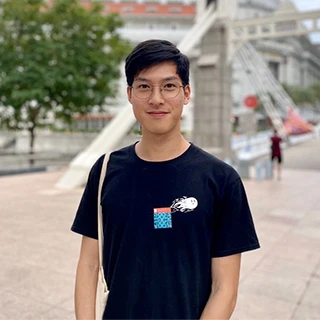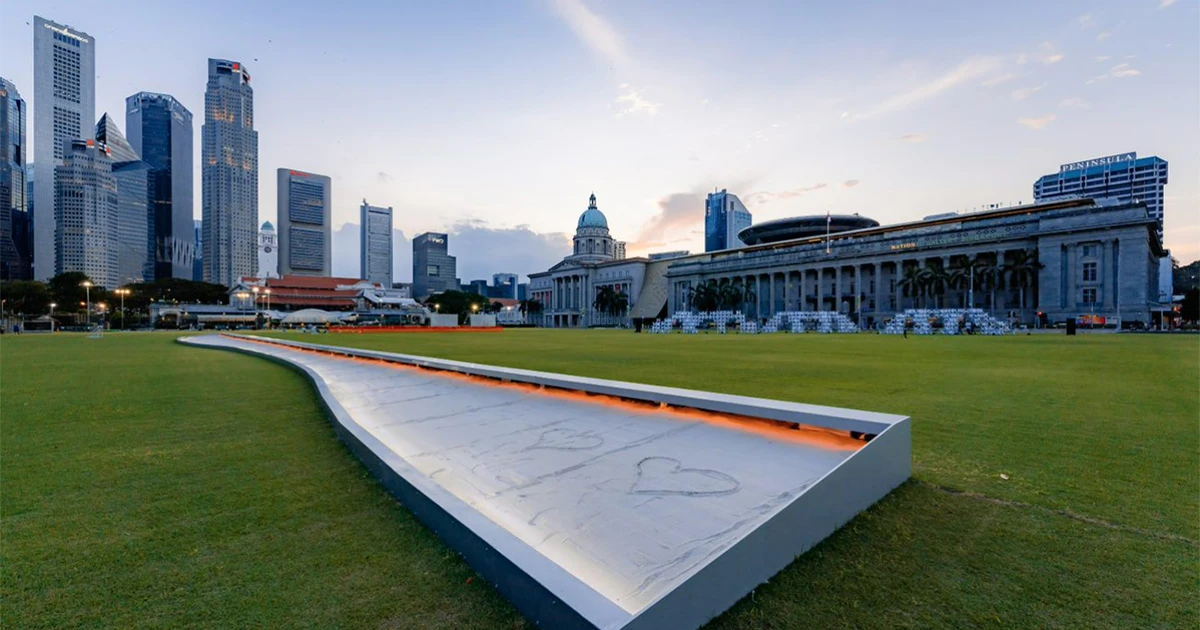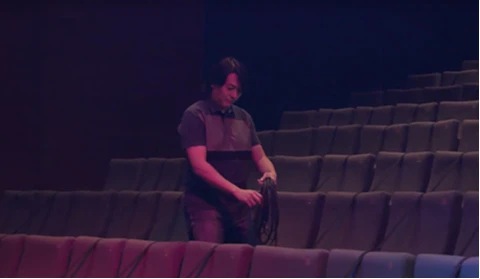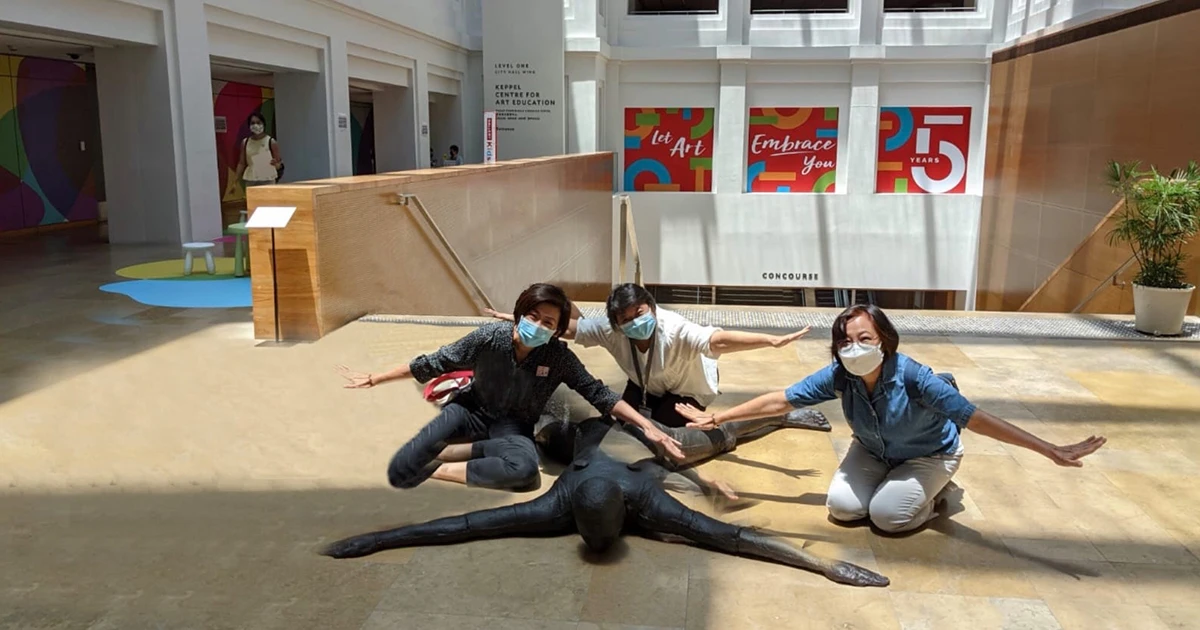Slowing Down with the Gallery
Is it possible to stare at an artwork for an entire hour? In this article, Mark Chia introduces the Gallery's Slow Art programme, where are appreciation meets slow looking and mindfulness. He shares about how participating in and planning the series helped him to navigate uncertainty, dread, and hopelessness.
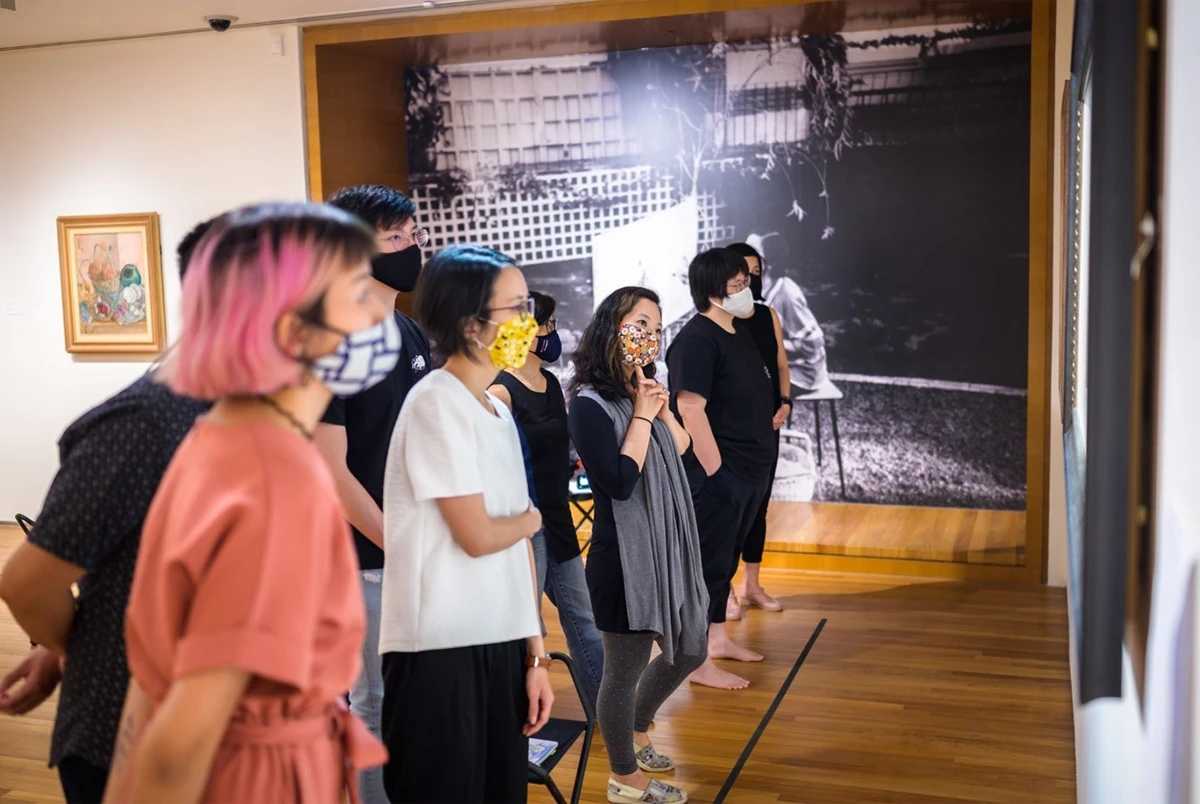
Is it possible for me to stare at an artwork for an entire hour? What does it mean to communicate and truly connect with one another in cyberspace? Is it by sharing one’s experiences and vulnerabilities despite the physical presence of bodies being absent? What can I say or do for others to get to know me?
These are but some of the many questions I had before partaking in National Gallery Singapore’s Slow Art Online programme and organising the Gallery’s participation in the global Slow Art Day.
As the battle with COVID-19 ceaselessly carries on, it is only natural for many of us to feel some form of dread and hopelessness. The pandemic marred what was supposed to be a special year for me with melancholy and uncertainty. It was a metaphorical punch to the gut, preventing me from visiting a loved one during their final moments, derailing my plans of walking proudly across that graduation stage and thrusting its set of uncertainties when it came to job-hunting. I certainly felt the full brunt of these emotions as someone who was not expecting these tragedies to had come in quick succession. In essence, there was an absence of closure which I desperately sought.
It was not until I participated in National Gallery Singapore’s Slow Art programme that was I then able to process these complex feelings and attain some form of closure.
Conceived of and launched during the height of the pandemic, the Slow Art programme was developed by the Gallery’s Community & Access team to provide solace and facilitate the social connections that so many people were missing. Slow Art Online consists of an intimate 60-minute Zoom session which introduces participants to the principles of slow looking, as well as creative exercises that engage different senses. The programme also spotlighted artworks from The Care Collection, which aims to provide "comfort and relief" to everyone from the stresses of the pandemic. The Collection was specially curated by curators from the Gallery and Singapore Art Museum (SAM) and are the perfect mediums for participants to check in on their feelings and revitalise their senses.
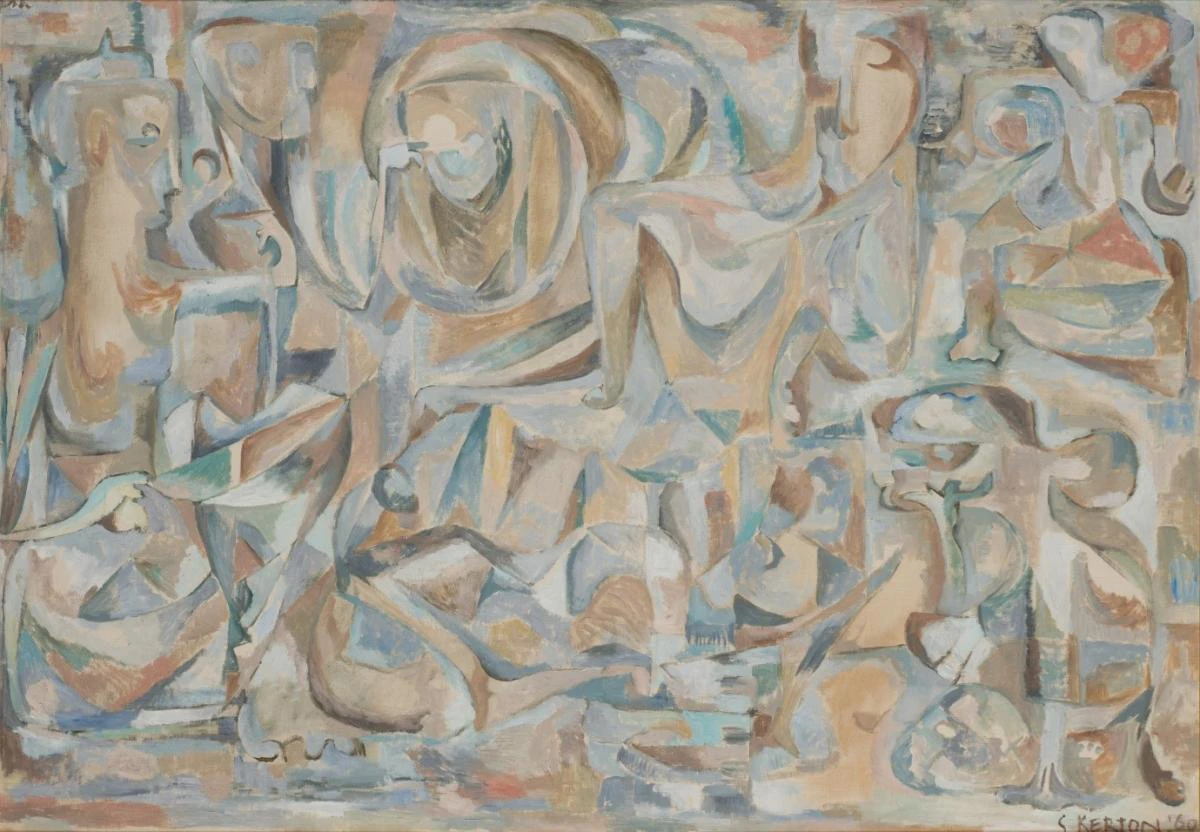
I still remember entering the Zoom session with trepidation; thoughts racing through my mind on whether my art knowledge would be up to par. However, my fears were quickly assuaged by the docent who was facilitating our session—"there is no right or wrong way to see art,” they cheerfully remarked. However, there was a tinge of apprehension as we began sharing our thoughts and feelings about the artwork. Slowly, participants and I got comfortable with one another as we steadily dissected the artwork displayed on our screens through a series of activities facilitated by the docent. It was refreshing having the space to communicate my thoughts and feelings, providing me that cathartic release I desperately needed.
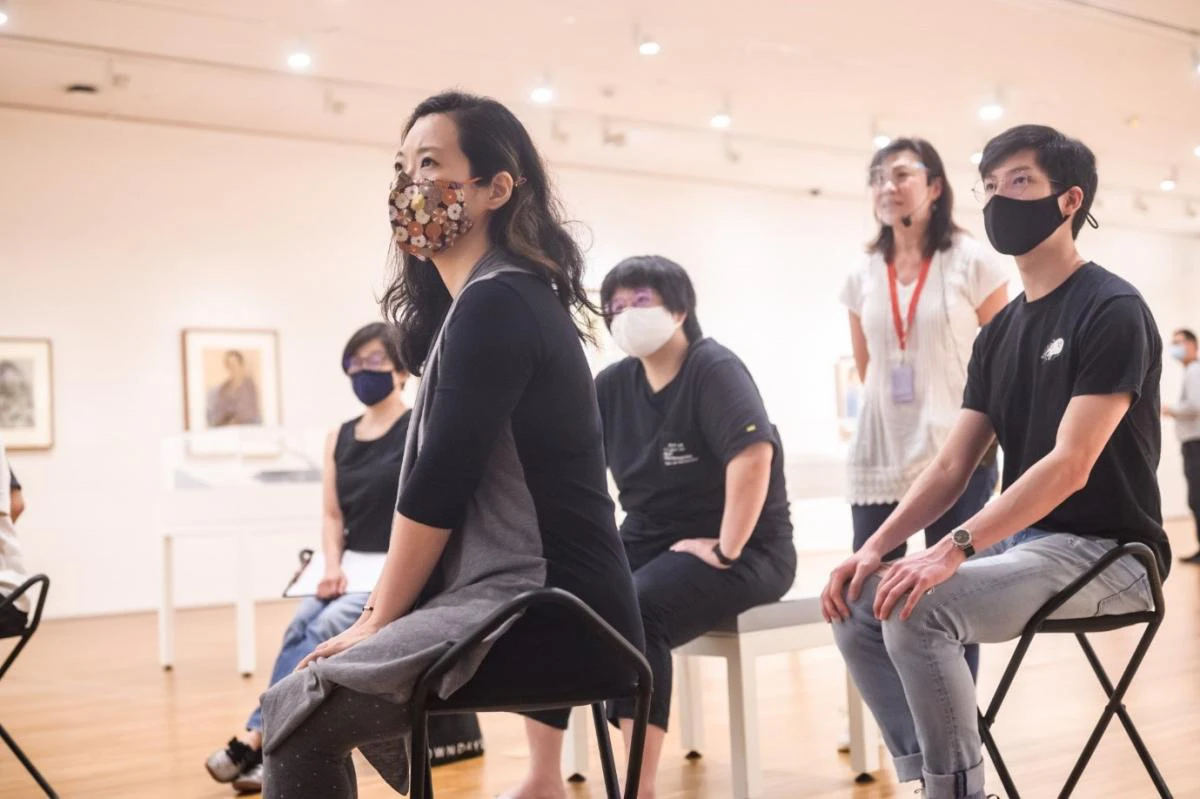
With the globally celebrated Slow Art Day falling on 10 April 2021, the Gallery’s Community & Access team started brainstorming on how we could improve upon the Slow Art programme. We recognised that while an online experience could be stimulating, it would never replace the intimacy felt by people sharing the same physical space. Even though both the offline and online programmes featured creative group exercises, there remained a degree of separation when participants gathered via Zoom.
Knowing this, the team launched Slow Art Plus, which aimed to take advantage of the Gallery's intimate setting and artworks as catalysts for deep conversation and building human connections. Slow Art Plus is built on the same principles as Slow Art Online—the key difference is that there is a mindfulness a component, which is led by a trained practitioner. The goal again was to have participants slow down and experience an artwork for 90 minutes. Furthermore, participating in Slow Art Day allowed our team to link up with other museums around the globe as they conducted their own programmes, while introducing international audiences to the Gallery's collection.1

Arranging an in-person event like Slow Art Plus did not come without its troubles. Shifting safe distancing directives meant the team was constantly on our toes as we worked alongside our fellow colleagues to ensure that our facilitator and participants would be safe throughout the session. Together with our facilitator, we also explored creative ways to manage expectations, since Slow Art Plus participants would be sharing the space with other Gallery visitors. Despite these challenges, the Gallery’s inaugural Slow Art Day was a great success. The two in-person sessions were fully subscribed the day after they were announced on our social media channels. Additionally, participants showed great interest in engaging in dialogue with each other. It was heartening to read the multitude of survey responses that thanked us for providing a space to learn more about artworks, artists, and other participants.
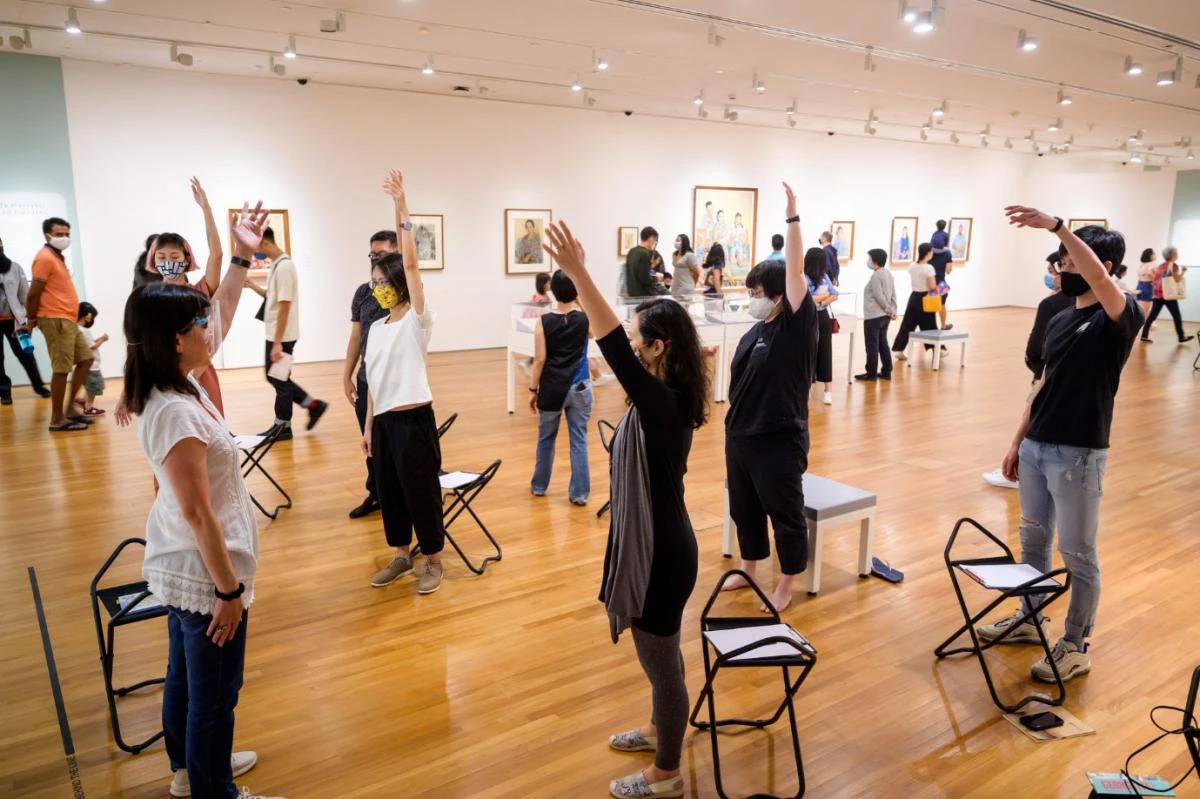
As we gear up for a return to normalcy in the coming months, I hope we allow ourselves to slow down and take stock of the present. I was not the biggest believer in the healing power of the arts, but I later realised that the art is merely a catalyst. It was through participating in and planning for the Gallery’s Slow Art programme that I found closure—this was from collective healing and supporting others in their journey. I encourage everyone who finds themself at the Gallery to allow themself the time to observe any of our artworks for a few minutes; ask yourself if you notice anything new this time round, and what that means to you.
Notes
- Slow Art Online definitely contributes to the Gallery’s mission of creating “dialogues between the art of Singapore, Southeast Asia, and the world”. Some of the sessions I assisted with saw participants from all over the globe including Europe, Africa, and North America!










